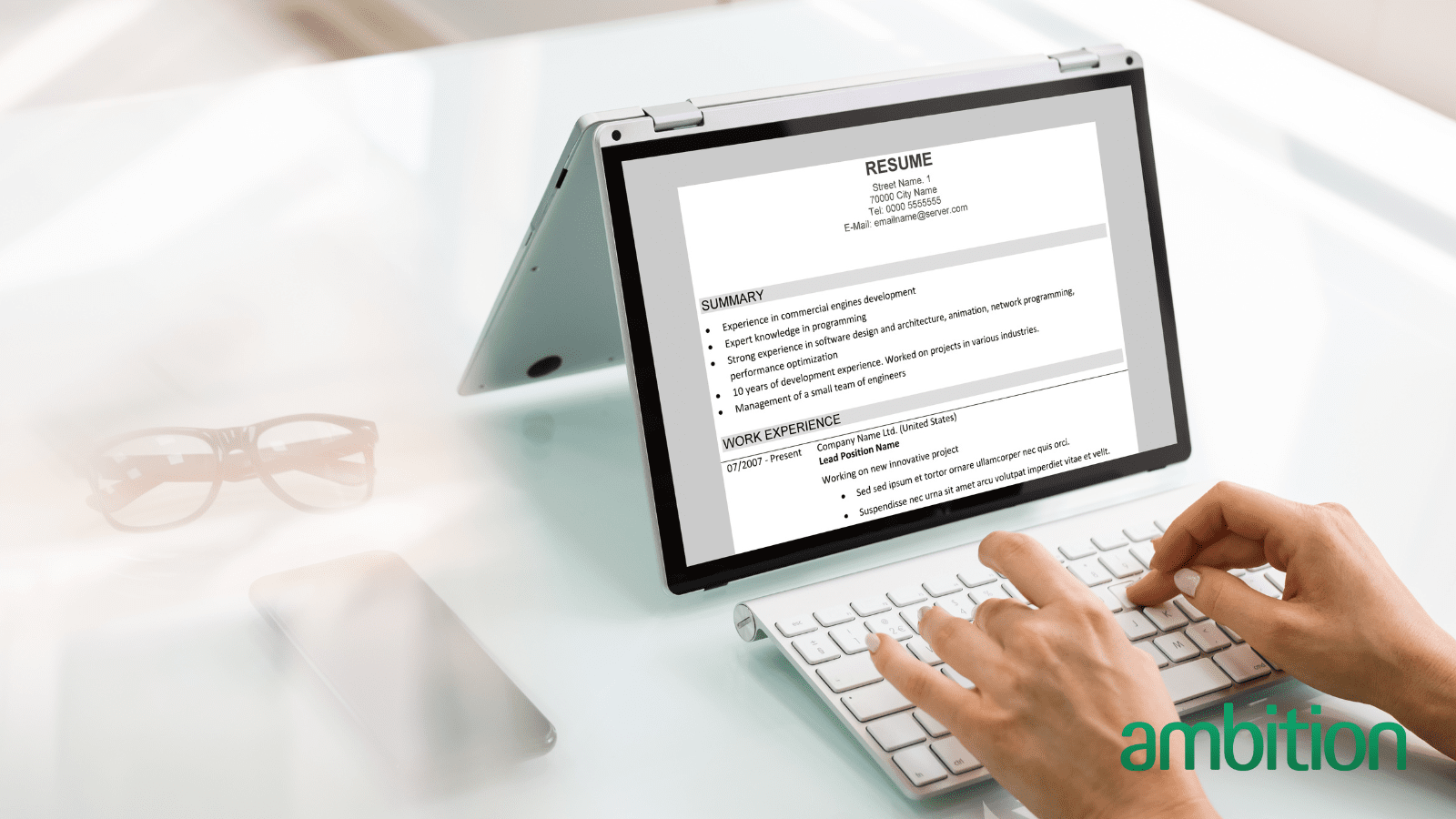Career insights with Ambition podcast
The podcast that dives deep into the defining moments of influential business leaders across technology, accounting and finance.

The podcast that dives deep into the defining moments of influential business leaders across technology, accounting and finance.

The podcast that dives deep into the defining moments of influential business leaders across technology, accounting and finance.

The podcast that dives deep into the defining moments of influential business leaders across technology, accounting and finance.



Researchers have found that your CV has 8 seconds to impress a recruiter or a hiring manager. If you do capture their interest, they will then spend an additional 1-2 minutes looking for other important aspects such as job history, significant accomplishment, and career progression. If you're needing help in your job search, contact the team here.
Use a simple font which is easy to read something like Arial or Calibri.
Format your CV in a way that is easy to follow.
Use clear headers and tidy up your page transitions. List your roles in reverse chronological order as employers are most interested in your most recent work. Try to keep your CV to around 2-3 pages long. Remember bullet points are your friends. They make the information easy to skim through and look crisp as well. Save your CV properly: "Joe Blog's CV – Python Final (Updated)" probably would be better as "Joe Blogs – Python Developer CV".
Send your CV in Word format (.doc).
MS Word is the most popular CV format. A CV in Word format is easy to read, can pass through any CV scanning software without issue and will be easy to open on most computers. Also, most recruitment Agencies usually need to transfer the contents of your CV into a standard format before submitting to a current job, or may need to make some last-minute updates to your CV (with your permission). All this can be done easily to a Word format document.
Less is more.
Apart from your career related information, you only need to add your email address, phone number, and general location you are looking for work in. Other excess information like your hobby, complete home address, takes up valuable space and can make your CV look messy. Moreover, you got to leave these things for your chat during your interview/call with the recruiters. So, be mindful of what important and relevant details your need to add in your CV.
Spell check.
A very small but crucial bit of detail is spelling and grammar. Perform a spell check before sending your CV out. With hundreds of CVs coming in for a job, even a silly spelling, grammatical or punctuation error can lead to your CV being rejected. This due diligence check is very important.
Research. Read that job description carefully and make a list of the required skills.
Use this list to help you highlight your strengths and change the narrative on your weaknesses. Don't leave it to the recruiters or hiring managers to guess or assume about your skill attributes. Add those important keywords so that it is easier for recruiters to find you when they search using these job titles and buzzwords.
Your Name & Contact details.
This is your title, make it bold and clear. You want them to remember your name!
Add core skills or a summary of your professional profile.
These snapshots make it easy for employers to get a real sense of your offerings. A small professional profile (about 4 or 5 lines summarising your skills, experience, industries and what tools you have used), and your highlighted core skills (about 6 bullets points to act as a snapshot of your offerings) guides the hiring manager or recruiter to your key selling points.
Your Professional experience.
Include adequate detail in your most recent role as this is where recruiters and hiring managers will look in-depth. Make sure you provide relevant information to explain your responsibilities. Don't forget to showcase your achievements in your roles. Use action words like “built the product” or “increased sales by 5%” or “brought down defects by 10%”. As you move to other role details, you can shorten your older roles. Say for a role that you did 10 years ago, you don’t need to add lengthy details about it. A short summary of the role or even a list for older roles will show your career path.
Mind the gap.
If you have an employment gap, explain it in your CV. Try to put a positive spin on the career break by mentioning any new skills that you have achieved, certification or general ways that you did to keep yourself relevant to the job market. Leaving the gap unexplained will make recruiters and hiring managers suspicious. Don’t let them guess or assume.
1. Does the CV read clearly and concisely?
2. How is the formatting? Is it consistent? Is the font type and size uniform throughout? Are the page transitions simple?
3. Are there any spelling, punctuation, or grammatical mistakes?
Bonus tip: Seek help from a trusted person (your friend, a colleague or a family member) who can proof-read your CV and point out any inconsistencies or errors. Sometimes an error can go unnoticed by our own eyes.
Wish you good luck in creating your simple but top-notch CV!